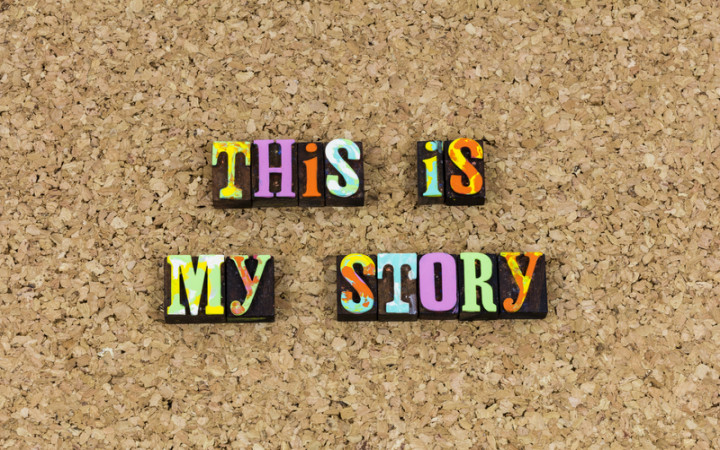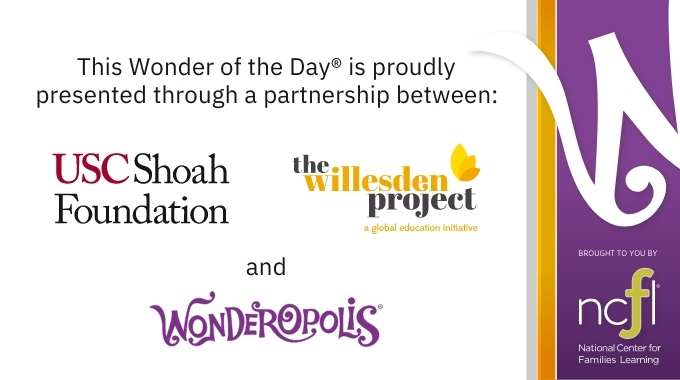Today’s Wonder of the Day was inspired by Kaylan from Columbia, SC. Kaylan Wonders, “Why is history important?” Thanks for WONDERing with us, Kaylan!
People have told stories to explain things since the dawn of time. and modern-day hip-hop and rap artists have told tales of events. Oral histories are a great way for people to retell the past in a firsthand way.
Simply, oral histories tell a story to keep the past alive. This gives humans today the chance to learn why things are the way they are. These tales often tell about the way the past affected people.
There are no set rules for saving these stories. But some methods were started by Allan Nevens in the 1940s. He made a system for keeping these accounts of real events. He used audio recordings. This recording often took the form of an interview. One person asked questions, and another person told about the event as it happened to them.
Even today, humans use oral histories around the world. People tell and listen to tales of times past. These stories can also recall people’s movements around the world as told by their ancestors. Many aren’t written anywhere. For example, Lisa Jura made sure her daughter, Mona Golabek, knew the story of how she arrived in England. Mona wrote the story of Lisa and how she worked hard to hold on to her music—a theme in the Children of Willesden Lane books—as a way to focus on moving forward during a hard time in her life.
Until recently, we have not used written language or technology to save oral histories. Today, we can write about what happened, record audio versions, and save video accounts. This way, people in the future can hear firsthand from those touched by events. This helps experts avoid stereotypes, prejudice, and hear the truth in the words of someone who was there. Many times, these oral histories can be called testimony.
Testimony is a personal retelling of something from the past. You might give testimony about an accident or a special event at school. Sometimes, people give testimony in court or recall a special memory of someone. You can even give testimony about a cool event, like seeing a comet or a town-wide celebration.
It is also a primary source of information about real events and experiences in history. This type of story allows the viewer to hear, in the words of the person, what they saw with their own eyes. It may include where they were born, where they went to school, details about their families, their life experiences, and the feelings they still have about these events.
Technology shapes how we tell and preserve stories today. There are many collections of primary source content and stories experts can use for looking at the past. These stories are told through the eyes and voices of people whose lives were changed by world events—such as the Holocaust and other genocides. These memories can help us better understand ourselves and others today and the stories can be kept for future generations.
Technology has shaped how we tell, record, and save stories. As a result, there are many sets of primary source data and retellings. Experts can use them to better see the past through the voices of people who were there.
Besides saving information, oral histories can preserve language and culture. In many parts of the world, only the oldest members of a community speak a language. By recording and translating these accounts of historical events or community stories, experts in the future will be able to support language revitalization efforts. For example, in the U.S., there are American Indian tribes trying to document and help children learn their ancestral language and customs. The Western Armenian and Kiche cultures also work to save their languages.
What events in your life might you want to tell people about? How can you save these memories in a way that may teach a lesson to others in a way that fully tells the story of what happened? Even though you might not think something is important now, it might be in the future.
Preserving memories are a vital part of the human experience, and USC Shoah Foundation’s Visual History Archive contains over 55,000 testimonies from survivors and witnesses—using audio and video—to educate future generations about the Holocaust and other atrocities, in support of the Institute’s mission to develop empathy, understanding, and respect through testimony so the next generation understands the importance of learning from the Holocaust and making the world a better place. Its IWitness platform contains many of these testimonies that were gathered using recorded interviews to tell the stories of survivors and witnesses. Inspired by the power of story to transform lives, USC Shoah's The Willesden Project combines testimony, technology and music to reshape Holocaust education.
Standards: CCRA.R.1, CCRA.R.2, CCRA.R.10, CCRA.L.3, CCRA.L.4, CCRA.L.5, CCRA.L.6, CCRA.SL.4, CCRA.SL.5, CCRA.W.3, CCRA.W.6, C3.D2.His.6, C3.D2.His.9, D2.His.10





